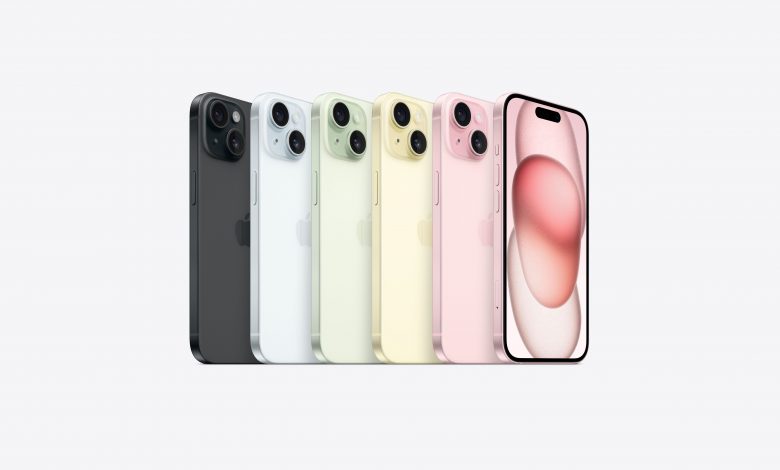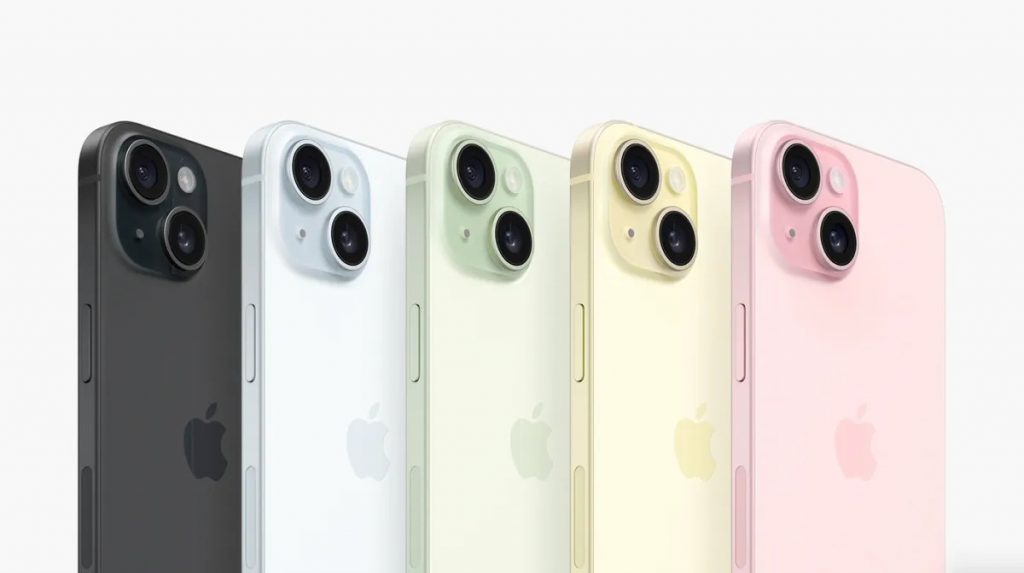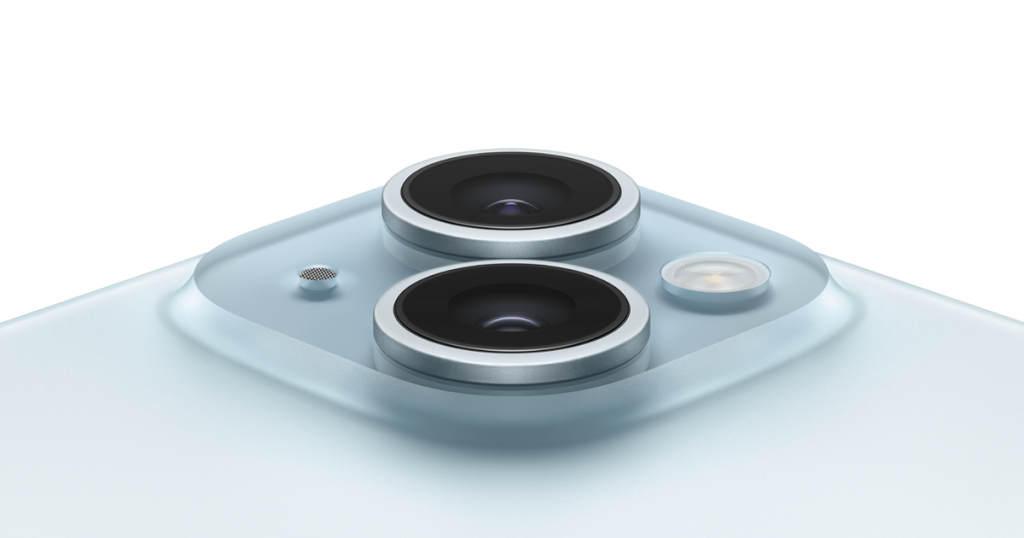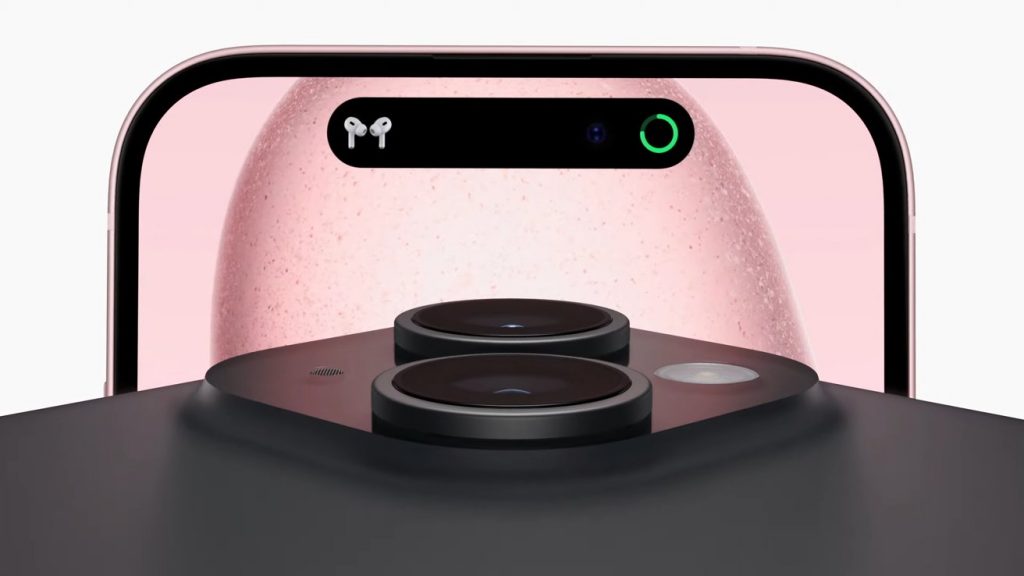
iPhone 15, Apple’s latest flagship offering, continues the company’s tradition of iterative upgrades. This review delves into the device’s performance, design, camera system, and features to help you decide whether it’s a worthwhile purchase.
Design Evolution
Apple has maintained its approach of subtle design refinements. With the iPhone 15 featuring an aircraft-grade aluminum frame that is more ergonomically contoured for a comfortable grip.

It’s available in a range of vibrant colors, including black, blue, green, yellow, and pink. The updated design has garnered positive feedback for its improved feel and aesthetics.
Embracing USB-C
One notable change in the iPhone 15 is the adoption of USB-C. While the move to USB-C is seen as positive, the device’s USB-C port operates at USB 2.0 speeds, offering no significant speed improvements over the previous Lightning connector. The transition may require users to replace their existing Lightning cables, but it streamlines the need for multiple cables across various Apple devices.
Camera Upgrade
The iPhone 15’s camera system stands out as a major enhancement. Apple has replaced the previous 12-megapixel dual-camera setup with a robust 48-megapixel configuration featuring a quad-pixel sensor. A photonic engine combines the low-light capabilities of 12MP images with the detail of a 48MP version, resulting in a default 24MP image with improved clarity and better low-light performance. Additionally, the iPhone 15 now incorporates a 2x optical-quality telephoto lens, offering three preselected zoom options.

Portraits in Regular Mode
One standout feature of the iPhone 15’s camera system is its ability to capture portraits in regular photo mode. The camera can detect humans, cats, or dogs in the frame and automatically gathers depth information, allowing users to apply the portrait mode effect after capturing the photo. This simplifies the process and enables users to achieve professional-looking portraits with ease.
Camera Capabilities
The iPhone 15 boasts a comprehensive set of camera features:
- Front-Facing Camera: The 12-megapixel front-facing camera supports Night mode, Smart HDR 5 integration, Dolby Vision HDR recording, Deep Fusion, and the next-generation Portrait mode, enabling improved low-light performance and stunning portrait shots.
- Dual-Lens Rear Camera: The 48-megapixel main camera, with an ƒ/1.6 aperture, features sensor-shift optical image stabilization and the option to save images in RAW or HEIF format. This year, a 2x optical-quality telephoto lens is included, marking a significant addition to the standard iPhone’s camera capabilities.
- Video Capabilities: The iPhone 15 excels in video recording, supporting up to 4K recording at various frame rates, HDR recording, ProRes video, Cinematic mode, Action mode, and slo-mo video, among other features.
- Portrait Mode Update: Portrait mode has been revamped, eliminating the need to select it before capturing an image. It activates automatically when a person or pet is detected, simplifying the process of achieving professional bokeh effects.
Dynamic Island Integration
A new addition to the iPhone 15 is the Dynamic Island, which houses the TrueDepth camera sensor for Face ID and the front-facing camera. This innovative design integrates the front-facing camera within the display, resulting in a seamless user experience. Dynamic Island serves as a central information hub for notifications, displaying a range of information from apps and services without leaving the current application. It expands and collapses as needed, ensuring that users have quick access to essential information.

A16 Bionic Chip
Moreover, the iPhone 15 features the powerful A16 Bionic chip. Previously featured in the iPhone 14 Pro models. This chip includes a 6-core CPU and 5-core GPU, offering solid performance improvements over its predecessor, the A15. While it falls just short of the A17 Pro chip in the iPhone 15 Pro models, it provides impressive processing power for a standard iPhone.
Face ID and TrueDepth Camera
Face ID remains the primary biometric authentication method on the iPhone 15, using a sophisticated array of sensors and cameras to create a 3D facial scan for secure authentication.
Pros and Cons of the iPhone 15:
Pros:
- Camera Excellence: The camera system is a standout feature, offering impressive image quality, improved low-light performance, and simplified portrait mode.
- Dynamic Island: The integration of the Dynamic Island enhances the user experience by providing quick access to essential information and features.
- A16 Bionic Chip: The A16 chip ensures snappy performance and smooth multitasking.
Cons:
- USB-C Speed: Despite the transition to USB-C, the port still operates at USB 2.0 speeds, limiting data transfer rates.
- Incremental Design: The design updates, while positive, remain incremental and might not justify an immediate upgrade for some users.
- Higher Price: The iPhone 15’s price tag may deter budget-conscious consumers, as it starts at a relatively high cost starting at ₱61,990.
The iPhone 15 offers significant improvements, particularly in the camera department and user interface. However, whether it’s worth the upgrade depends on individual needs and preferences. While it may not be a compelling upgrade for every iPhone user, those seeking enhanced camera capabilities and a more immersive user experience will find the iPhone 15 a worthwhile investment.
Visit https://powermaccenter.com/collections/iphone-15 to learn more.






